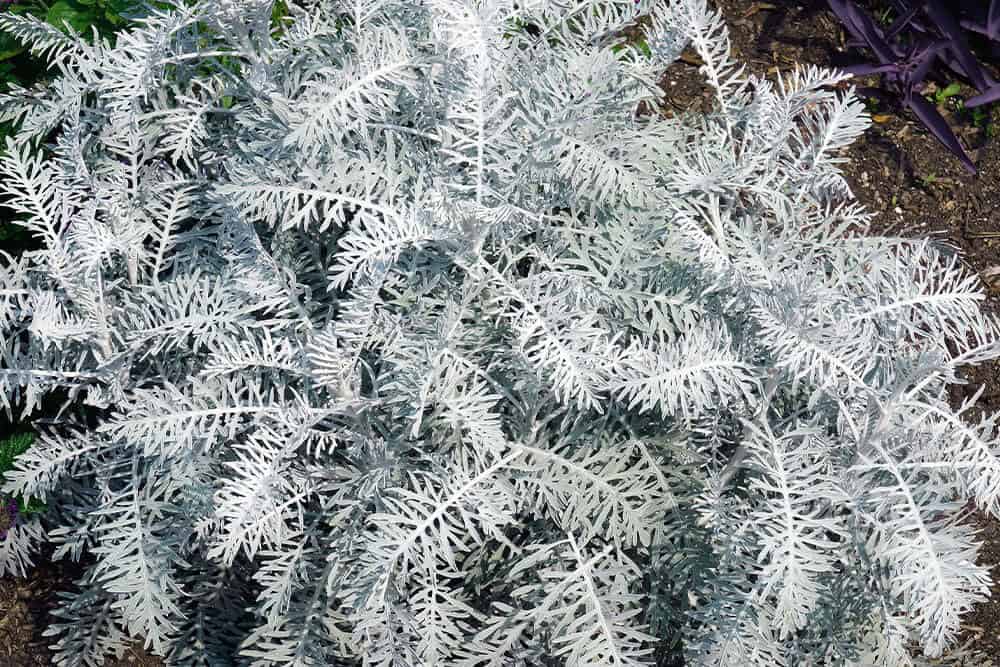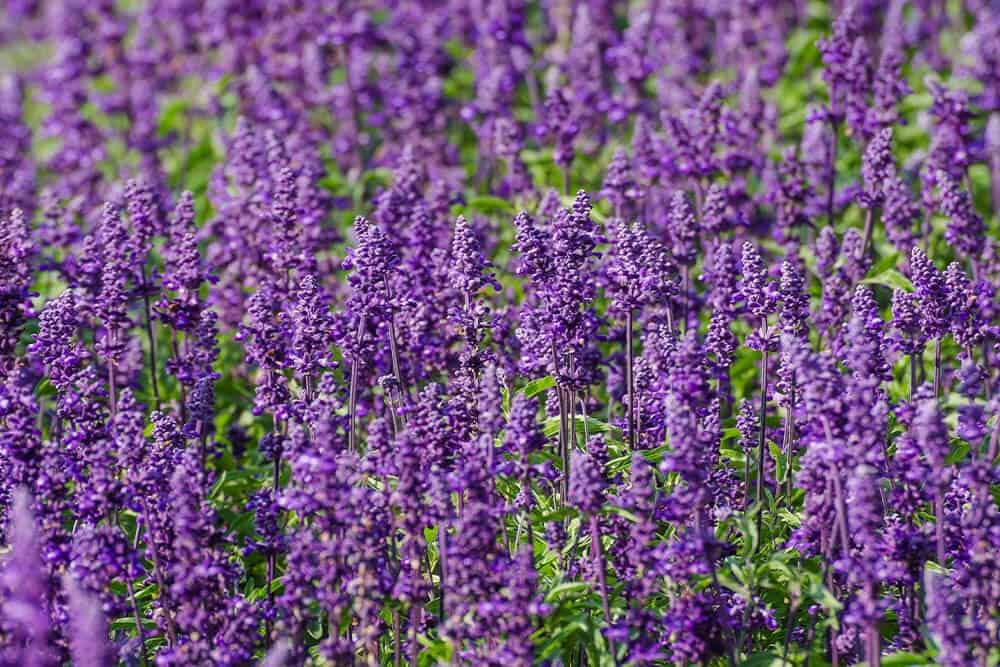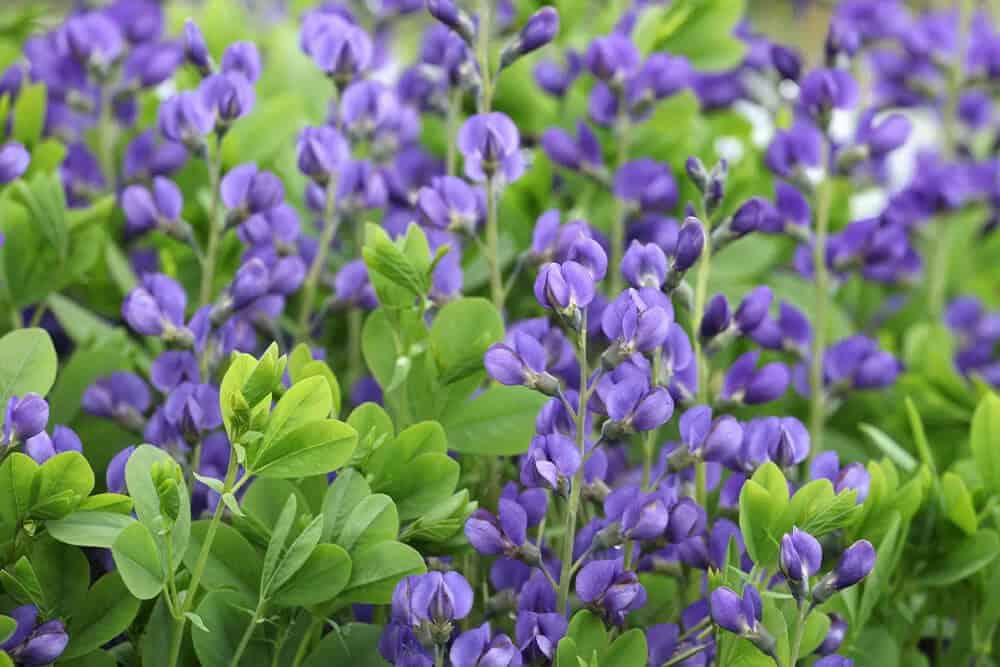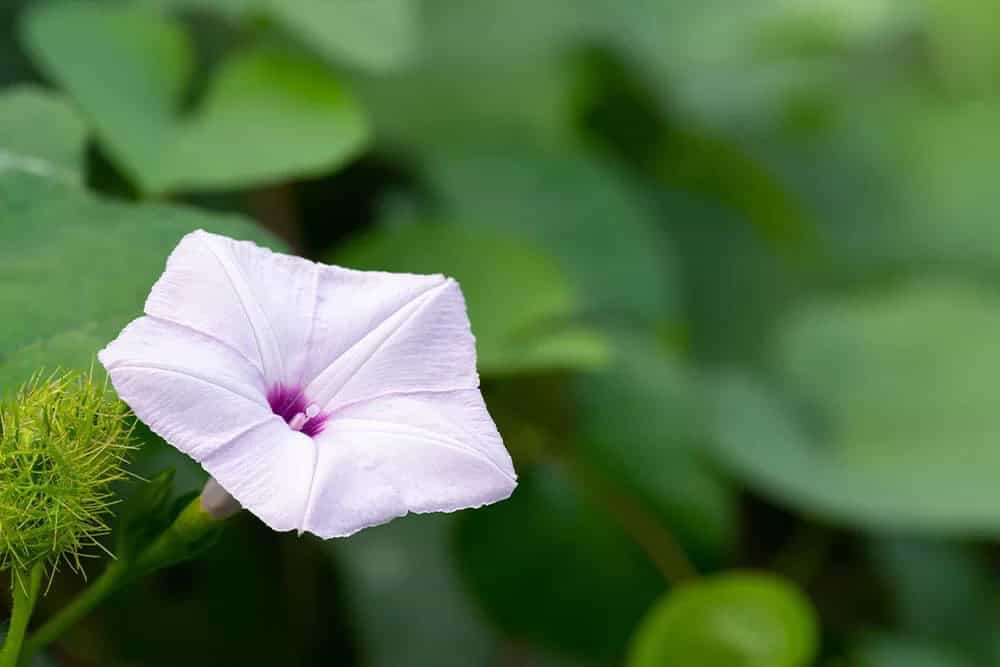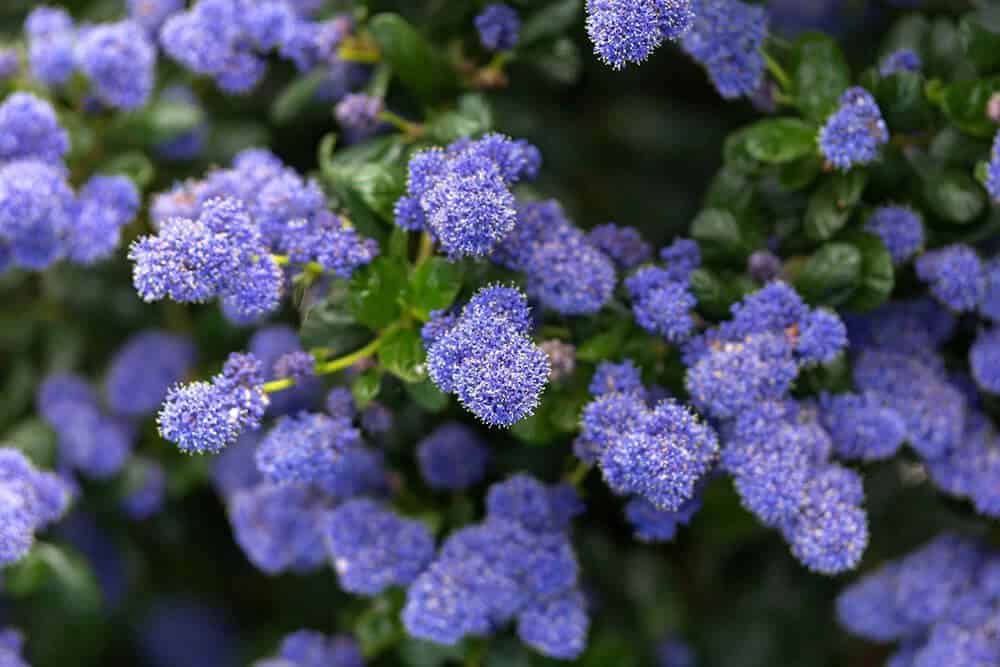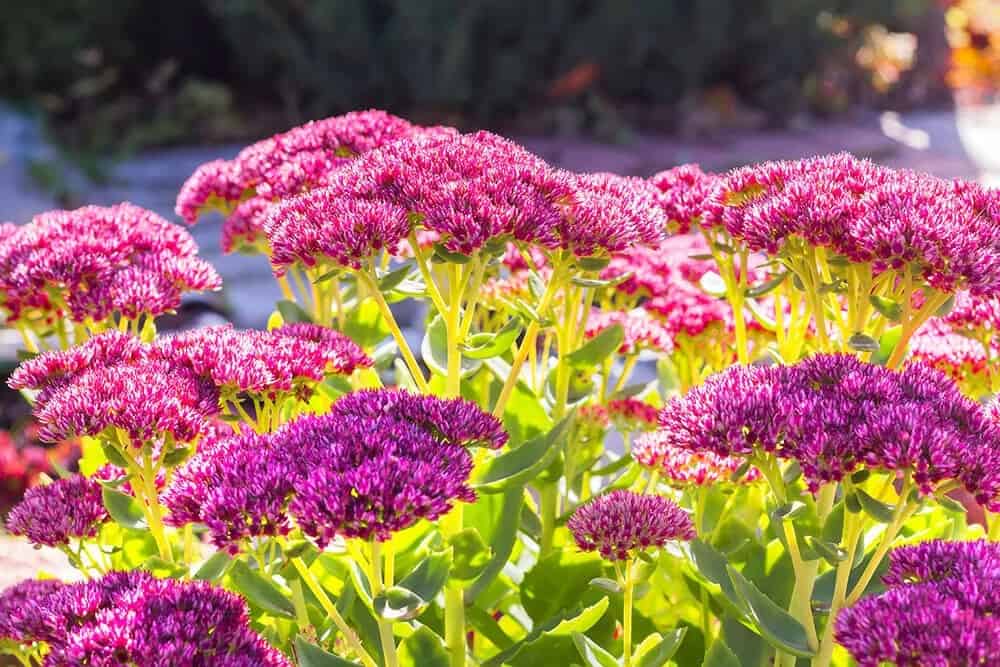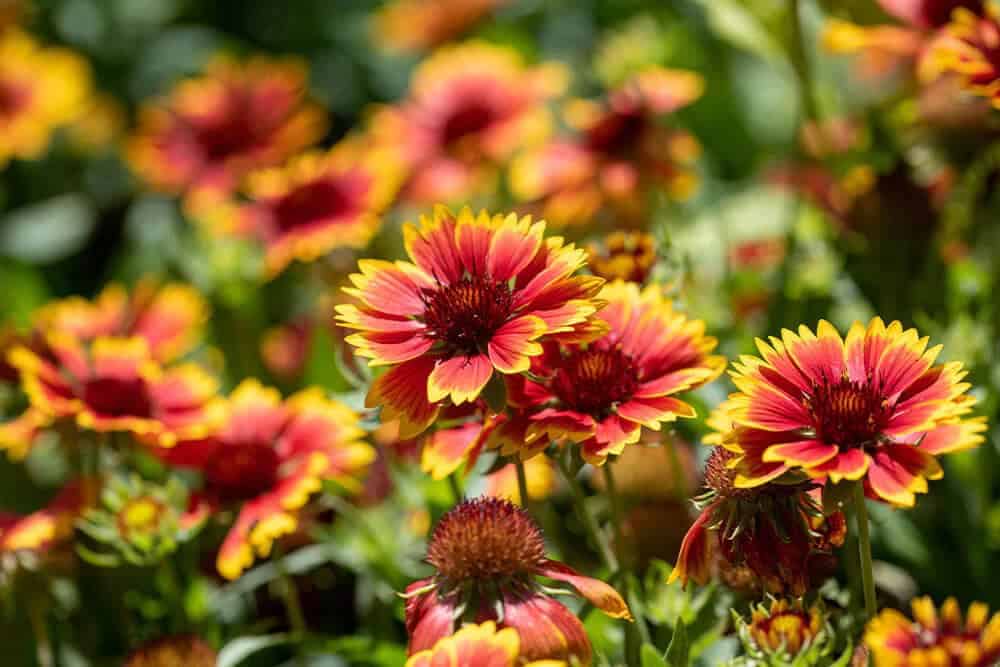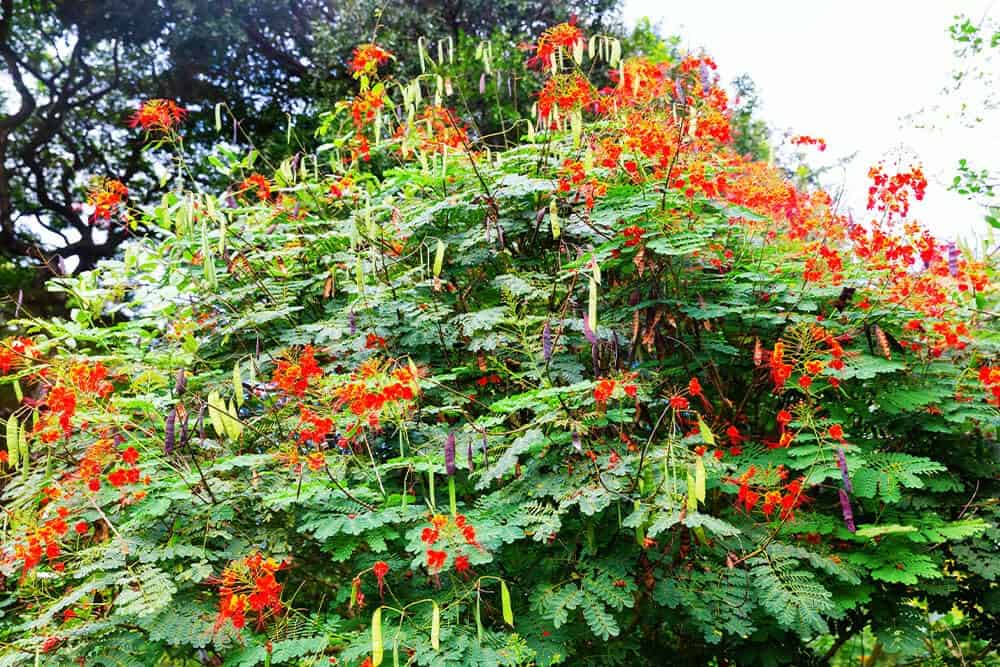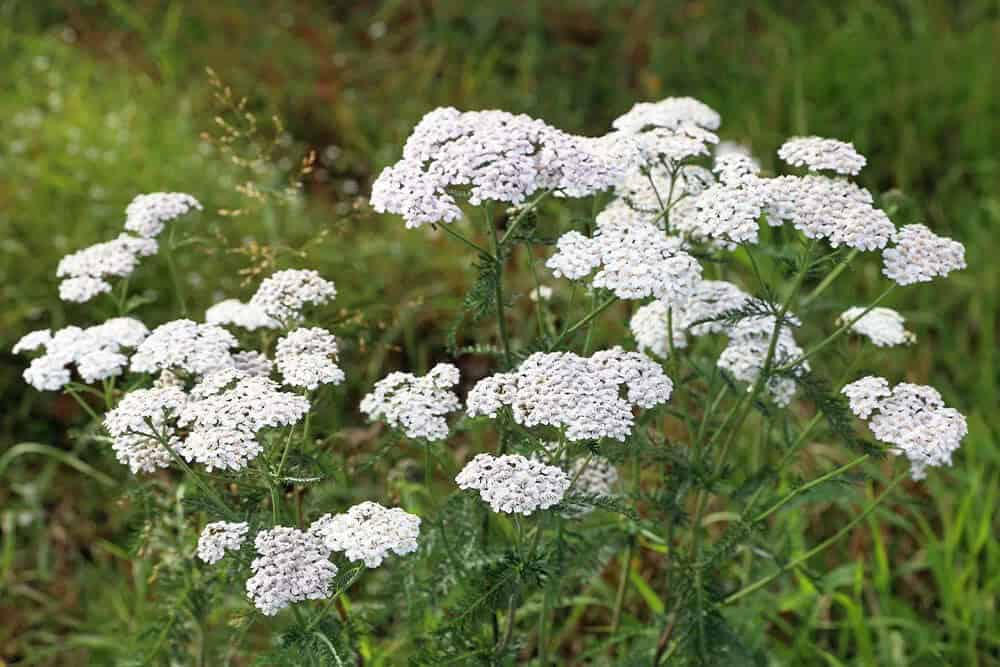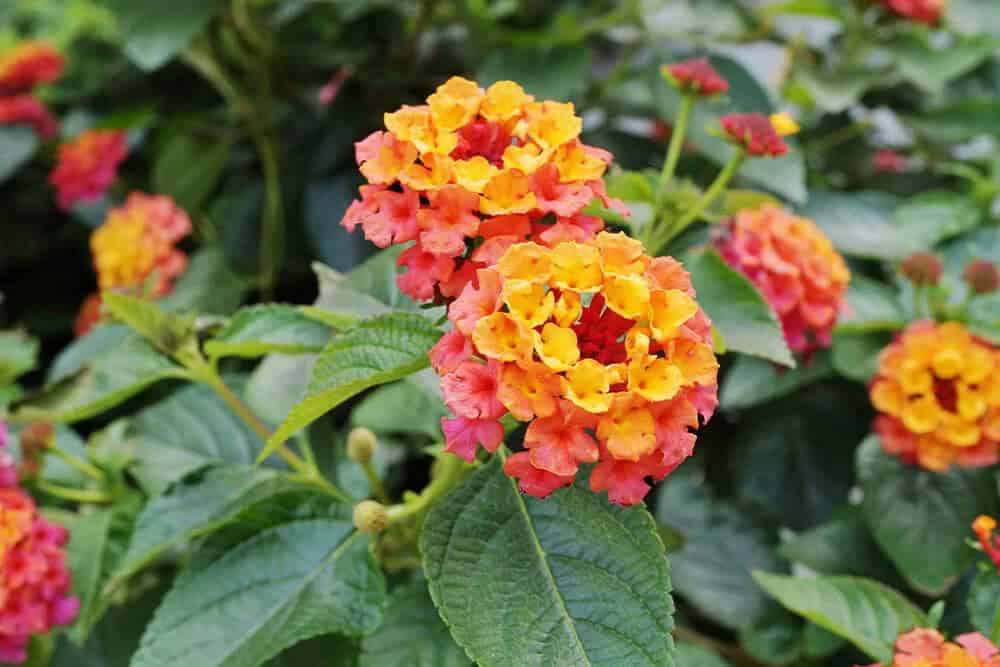In any gardening endeavor, water is a crucial element that requires careful attention. Not only is it essential for the survival of your plants, but it’s also time-consuming and often tricky to get just right. The wrong amount or timing of watering can lead to wilting, root rot, or even leaf spot – making it a delicate balancing act. For gardeners in areas with scorching summers or dry spells, maintaining a lush and vibrant garden can be a real challenge.
If your plants look lackluster by the end of summer, it may not necessarily mean you’re slacking off. Instead, you might simply need to rethink the types of plants you’re using. Drought-adapted gardens have gained popularity in recent years as gardeners seek to reduce their garden’s environmental impact and reap the benefits of low-maintenance, resilient plant choices. The good news is that you don’t have to sacrifice aesthetic appeal for drought resistance.
Many of the toughest, most hardy plants are also incredibly beautiful – a win-win for any gardener looking to create a stunning yet sustainable outdoor space.
Key Takeaways
While the terms ‘drought tolerance’ and ‘drought resistance’ are often used interchangeably, they actually refer to distinct adaptations. Drought-tolerant plants have evolved to cope with temporary water scarcity, whereas drought-resistant plants can survive chronic water restriction. Many drought-tolerant species may not perform well in dry conditions due to their reliance on seasonal rainfall.
In contrast, drought-resistant plants can thrive on limited moisture – but this also makes them more susceptible to overwatering. Most drought-adapted garden plants exhibit a combination of both tolerance and resistance, yet this doesn’t guarantee they’ll succeed in your specific environment. Factors such as climate, soil type, and seasonality all impact plant performance. Don’t assume that a ‘drought-resistant’ plant will never require supplemental water.
While many can survive with minimal watering once established, young or newly transplanted specimens still need occasional hydration. Another crucial trait to consider in drought-adapted plants is resistance to deer browsing and other herbivory. Even without significant deer activity, your garden may become more attractive during a drought – especially if it’s the only green oasis nearby.
In general, native plants tend to excel in local conditions, having evolved to thrive in specific climates and soils. They often resist pests and diseases better than exotic species. When evaluating the performance of your drought-adapted garden by summer’s end, don’t be discouraged by setbacks. Instead, identify which plants thrived and use this information as a starting point for future adjustments.
The following list comprises 15 remarkably resilient, low-maintenance plants suitable for drought-adapted gardens. This diverse selection includes ground covers, shrubs, and more – all capable of maintaining their vibrancy with minimal watering throughout the summer.
15 Drought-tolerant Plants that Look a Lot Less Thirstier than They Are
Purple Coneflower (Echinacea purpurea)
Purple coneflower is a stalwart performer in any garden, cherished by both novice and seasoned horticulturists for its vibrant blooms that last all season and effortless charm. This hardy yet beautiful native perennial thrives in natural habitats across the eastern United States from Texas to New England (zones 3-8), and its adaptability is as impressive as its expansive range suggests.
While many plants require constant attention, purple coneflower proves remarkably self-sufficient, tolerating drought, scorching heat, and poor soil conditions with equal aplomb. And yet, it also flourishes in rich clay soils and partial shade. This remarkable resilience makes it the ultimate ‘plant and forget’ option – a rare find indeed.
Artemisia (Powis Castle)
‘Powis Castle’ Artemisia is renowned for its exceptional qualities, earning the title of ‘one of the finest plants in cultivation’. Its delicate, silvery foliage is a sight to behold, but what truly sets it apart is its remarkable resilience. This mounding perennial thrives in zones 6 to 9, exceling in full sun on dry, rocky soil that would deter even the hardiest weeds.
In fact, ‘Powis Castle’ flourishes in conditions that would prove challenging for many plants: slow drainage, humidity, and poor air circulation are all overcome with this plant’s adaptability. What’s more, it requires ample space to spread out – a single specimen can cover an area of up to six feet wide or more, making it an invaluable addition as a ground cover, border, or accent.
Sage (Salvia spp.)
The Salvia genus boasts an astonishing diversity of nearly a thousand species globally. Native to arid regions such as Central America, the Mediterranean, and Western Asia, many salvias have evolved to thrive in drought-prone environments. This offers gardeners seeking low-maintenance options for dry climates a wealth of choices. Ornamental hybrids aside, some native species like autumn sage (S.
greggii) stand out for their heat and humidity tolerance, as well as their ability to bloom throughout the summer, defying its name. Baby sage (S. microphylla) is another drought-tolerant option, with the popular ‘Hot Lips’ cultivar being a favorite in southern and southwestern gardens. Among exotic species, Russian sage (S. yangii) has gained popularity for its large size, abundant flowers, and hardiness to zone 4 temperatures.
Interestingly, one of the most drought-friendly sages is actually a hybrid between two native species: ‘Indigo Spires’ and its dwarf version, ‘Mystic Spires’, offering gardeners an attractive and low-maintenance option.
Baptisia, False Indigo (Baptisia australis)
Rattlesnake Master (Eryngium yuccifolium)
Rattlesnake Master, a perennial member of the carrot family (Apiaceae), originates from the prairies and open woodlands of the Great Plains and Deep South. Its striking appearance, characterized by toothed leaves resembling blades, is complemented by spherical flower clusters that emit a surprisingly pleasant aroma, attracting pollinators. This hardy plant thrives in zones 3 to 9, tolerating dry, rocky soil and partial shade.
It excels in naturalized meadows or woodland gardens, where its unique appearance can be showcased alongside more structured native plants.
Alamo Vine (Merremia dissecta)
Like morning glories, Alamo vine boasts showy white blooms that are sure to catch your eye. But unlike its climbing cousin, this vigorous, native vine thrives in challenging conditions – think droughts, humidity, and poor soil quality. As a deciduous perennial south of zone 7, it’s well-suited to its native habitat. However, its rapid growth rate makes it an ideal candidate for growing as an annual further north.
One thing is certain: Alamo vine isn’t meant to be trained on a trellis – instead, it spreads out like aerial ground cover. Give it the space to expand and a fence or shed to climb on, and you’ll be rewarded with a stunning display of profuse flowers and textured foliage that’s sure to make an impact.
Blueblossom, California Lilacs (Ceanothus thyrsiflorus)
Ceanothus, a resilient genus of shrubs, excels in varied environments, from arid rocky soil to shaded stream banks. Its most popular ornamental species, Blueblossom (C. thyrsiflorus), also known as California lilacs, stands out for its showy display. The plant’s vibrant blue-to-violet blooms aptly justify the name ‘Blueblossom’, while its glossy evergreen foliage remains attractive year-round.
Left unpruned, it can grow to impressive heights and spreads, but it responds well to pruning and can be maintained as a compact three-foot shrub in a border or hedge. One notable trait of Blueblossom is its intolerance to transplanting; once established, it’s essential to treat it like a tree due to the damage that can occur when moving its extensive and deep root system.
English Lavender (Lavandula angustifolia)
If you’ve only associated lavender with the kitchen, you’re doing it a disservice – this fragrant herb’s beautiful flowers, delicate texture, and resilience make it an outstanding addition to any garden. Among its many species, English lavender stands out as the hardiest and most perennially robust, thriving in USDA zones 5 and above, whereas other varieties typically don’t survive winter conditions north of zone 8.
Its remarkable drought tolerance also allows it to flourish in arid environments, where more fastidious plants might struggle to survive. As a border or edging plant, lavender is an attractive choice, and its appeal to pollinators makes it a valuable companion to plants bearing edible fruits.
Stonecrop (Sedum)
Stonecrop’s remarkable ability to thrive on bare rock has earned it a special place in the hearts of many gardeners. This hardy succulent forms a vibrant carpet of stems that, in some species, burst into a kaleidoscope of colors. Its heat- and drought-tolerant nature makes it an ideal choice for thin, rocky soil, where other plants might struggle to survive. In recent years, Stonecrop has also gained popularity as a green roof option, adding beauty while providing insulation.
While there are numerous Sedum species to choose from, they generally fall into two distinct categories: tall and short. The former tend to be more upright, with a clumping or mounded shape, and often produce large, showy clusters of flowers that linger for an impressive amount of time. In contrast, the latter are low-growing (sometimes only a few inches tall) but spreading, making them perfect ground covers for harsh or exposed areas.
Blanket Flower (Gaillardia)
The vibrant red, orange, and yellow blooms of blanket flowers are a treat for both humans and wildlife, providing a stunning display all summer long even in parched and scorching gardens. These native perennials thrive in hot climates, making them an ideal choice for large-scale landscaping projects like highway verges. Their ease of growth from seed, combined with their tolerance for drought, heat, and other harsh conditions, make them a favorite among gardeners and landscapers alike.
Once established, blanket flowers are incredibly low-maintenance, requiring minimal care until they start blooming again in the spring. Depending on the species, they can be grown as annuals or perennials between zones 3 and 8. Even if some plants don’t survive the winter, you may not notice, as blanket flowers have a remarkable ability to self-seed prolifically, ensuring their return year after year.
Peacock Flower, Pride of Barbados (Caesalpinia pulcherrima)
The peacock flower’s striking red-and-orange hues and intricately designed stamens, which can extend up to six inches in length, command attention. This tropical plant thrives as an evergreen shrub or small tree in warm climates, but is often cultivated as a deciduous shrub (in zones 9 and above) or perennial (zone 8). Despite its dainty appearance, the peacock flower exhibits remarkable resilience to drought, requiring only occasional deep watering during the summer months.
It also displays impressive heat tolerance and deer resistance due to its spiny stems. As an eye-catching specimen or anchor, this plant is hard to ignore. Alternatively, a few pruned plants can be strategically placed to create a stunning hedge or screen.
Yarrow (Achillea spp.)
Yarrow’s stunning summer blooms are just the beginning of its charm. This hardy perennial produces delicate clusters of white, yellow, or red flowers that flow continuously from early spring to late fall, accompanied by deeply compound leaves that resemble a fern’s fronds. The specific epithet ‘A. millefolium’, which translates to ‘a thousand leaves’, is aptly named given the plant’s lush foliage.
Yarrow’s impressive distribution across the globe is mirrored in its remarkable hardiness, thriving in zones 2 through 10 – essentially covering the entire continent. This adaptability is further reflected in its ability to tolerate a wide range of conditions, from dry to hot and rocky soils, making it an excellent choice for gardens with challenging terrain.
As an added bonus, yarrow’s spreading growth habit makes it perfect for creating lush borders, mass plantings, or even as a flowering ground cover.
Esperanza, Yellow Bells (Tecoma stans)
Yellow bells may be a relatively new player in the landscape trade, but its impressive charm has swiftly gained popularity among southern gardeners. The plant’s showy flowers, which bloom consistently throughout the summer, are just one of its many alluring features. Its exceptional drought tolerance, heat resistance, and ability to withstand deer damage have further solidified its reputation as a top choice for gardeners in this region.
As a deciduous shrub or perennial, yellow bells thrives in zones 9 to 11, with some varieties capable of withstanding frost down to zone 8 when heavily mulched in the fall. For northern gardeners, there’s no need to feel left out – the plant grows rapidly enough to be grown as an annual, and it also does well when planted in containers.
Lantana (Lantana spp.)
Lantana’s vibrant flower clusters burst with colorful charm, injecting a lively splash of color into the summer garden even during the hottest months. This beloved ornamental has been delighting since the 19th century, with numerous cultivars and hybrids offering an astonishing array of hues. While their whimsical blooms may steal the show, lantanas are remarkably resilient plants, thriving in the sweltering heat, drought, and humidity typical of southern climates.
Native to the region, two common species have adapted perfectly to these conditions. Although a few perennial varieties can be grown as far north as zone 7, lantanas excel just as well as annuals, often reaching an impressive five feet high within a single growing season.
Desert Willow (Chilopsis linearis)
Desert willow may seem like an oxymoron, as its name suggests, but this flowering beauty is far from a true willow. In fact, it’s a member of the Bignoniaceae family, closely related to esperanza. Its slender leaves and unconventional growth habit evoke memories of its namesake, yet its vibrant trumpet-shaped blooms in shades of pink and purple are truly one-of-a-kind. These showstoppers attract a wide range of admirers, from humans and butterflies to hummingbirds.
Despite its desert moniker, the plant’s hardiness is more than just a clever name – it thrives in the arid landscapes of Arizona, New Mexico, and west Texas, making it an excellent choice for parched yards. Its ability to tolerate dry conditions means you can rest assured that desert willow will flourish even in challenging environments. This rapid-growing tree responds well to pruning, allowing you to shape it to your liking.
To create a shrub-like appearance, prune it back during the winter months to encourage multiple stems. Alternatively, let it grow unaltered for a more majestic tree-like shape.
15 of the Most Drought-Resistant Plants (That Aren’t Cacti)
Among the numerous perennials that thrive even in the scorching heat of a dry summer, these few examples showcase the impressive adaptability found among ornamental plants. This list aims to provide a glimpse into the versatility of drought-resistant flora and potentially spark new additions to your personal plant collection.
While no single list can encompass the vast array of such perennials currently available, from native species to innovative hybrids, it’s undeniable that there are countless options waiting to be discovered.
It’s essential to remember that adopting a drought-adapted approach doesn’t require an all-or-nothing commitment.
By incorporating just a few drought-resistant foundation plants or borders into your landscape design, you can significantly reduce water consumption and redirect your focus towards nurturing the plants that truly matter.
Frequently Asked Questions About Drought-Tolerant Plants
What is the most drought-tolerant plant?
In arid environments, plants have evolved remarkable strategies to survive with minimal water intake. One such example is the creosote bush (Larrea tridentata), which thrives in the Mojave Desert on as little as a few millimeters of rain per year. This drought-tolerant plant is just one of many species that can survive in extremely dry conditions.
But there’s another group of plants that can withstand almost complete dehydration and then revive when rehydrated – these are known as ‘resurrection plants’. Comprising mostly mosses and ferns, such as the common native resurrection fern (Pleopeltis), these plants can remain alive for extended periods in a state of suspended animation. In fact, some species like Pleopeltis have been known to survive up to a century in this desiccated state, only to rapidly recover when rehydrated.
While flowering resurrection plants are relatively rare, one notable example is the Orpheus flower (Haberlea). In the early 20th century, a botanist accidentally revived an Orpheus flower that had been pressed, dried, and stored in a herbarium for three years. This remarkable ability to survive extreme dehydration has fascinated scientists and shed light on the incredible resilience of certain plant species.
Which plant can survive in extremely dry conditions?
The Earth’s driest regions outside of Antarctica are surprisingly diverse ecosystems that provide a unique habitat for countless species of plants known as xerophytes, which thrive in environments where water is scarce. These remarkable plants don’t just survive dry spells; they’re well-suited to life without water. Familiar examples include cacti and succulents, but there’s much more to xerophytism than these iconic species.
In the Namib Desert, one of the driest places on Earth with an average annual precipitation measured in millimeters rather than inches, a peculiar plant called Welwitschia mirabilis can be found. This enigmatic plant is notable not only for its unusual appearance but also for its extraordinary adaptations to its environment: it has no stem and produces only two leaves throughout its lifetime, which continue to grow continuously until the plant dies.
What is the meaning of drought tolerance?
While often used interchangeably, the terms ‘drought tolerance’, ‘drought resistance’, and ‘drought avoidance’ each carry distinct meanings. A plant’s drought tolerance refers to its ability to survive or recover from brief periods of drought, making it less relevant to plants like cacti, yuccas, and acacias that thrive in arid environments. These species have evolved to cope with perpetual water scarcity, where the threshold for drought is significantly lower.
Contrary to popular perception, many drought-tolerant plants actually originate from regions with abundant rainfall, including rainforests. Similarly, most of these plants are not flowering varieties, which possess mechanisms to minimize water loss. Instead, they tend to be simple organisms like mosses that lack control over their water-loss rates and dry out rapidly.
However, these plants can shed nearly all the water in their tissues and remain viable – albeit dormant – for extended periods, ranging from years to decades.
Which plant lives in a dry habitat?
The Poaceae family, commonly known as the grass family, boasts an impressive array of drought-adapted species. While not all grasses are equally resilient in arid conditions, they have predominantly evolved to thrive in dry environments. To put this into perspective: forests, which cover roughly 30% of the Earth’s land area, comprise tens of thousands of tree species spanning multiple families.
In contrast, vast expanses of grasslands, making up approximately 40% of the planet’s surface, are overwhelmingly dominated by members of a single plant family – the grasses themselves. If these drought-hardy plants didn’t exist, large portions of this land area, which is too arid to support tree growth and often too dry even for shrubs, would likely be desert-like environments.
What plants need the most water to survive?
While it may seem counterintuitive that plants that thrive in water are rare, considering all land plants originated from aquatic algae, it’s important to note that the initial evolution of plants occurred on land. In essence, aquatic plants had to re-adapt to their aquatic environment, much like whales and dolphins had to adapt to life underwater. Interestingly, many plants actually prefer living on land despite its challenges.
For instance, the world’s most water-reliant plants are eelgrasses, which belong to the genus Zostera. Unlike other aquatic plants that either emerge from the water or float on its surface, eelgrass uniquely lives and reproduces entirely underwater.

